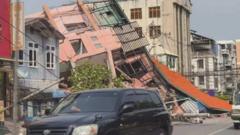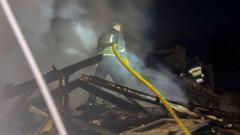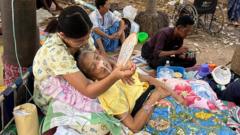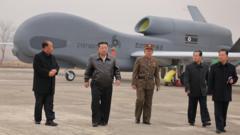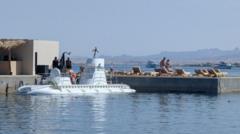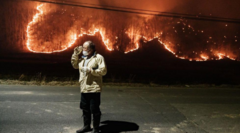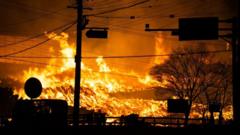The wildfires, now termed the worst in South Korea's history, have devastated large areas, prompting emergency evacuations and widespread destruction.
Historic Wildfires Devastate South Korea, Claiming Lives and Heritage Sites
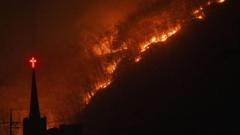
Historic Wildfires Devastate South Korea, Claiming Lives and Heritage Sites
Unprecedented wildfires lead to 18 deaths and thousands evacuated as South Korea battles its deadliest fire crisis.
As South Korea faces its gravest wildfire catastrophe, the death toll has tragically risen to 18, with 19 others injured, according to the Ministry of the Interior and Safety. Acting President Han Duck-soo described the situation as "rewriting the record books" for wildfires in the nation, emphasizing the unprecedented nature of this crisis.
The wildfires have led to the evacuation of over 23,000 residents and inflicted significant damage to hundreds of structures. Among the cultural losses, a 1,300-year-old Buddhist temple, Gounsa, which was one of the region's largest, has been completely destroyed. The ongoing fires, which began in Sancheong County, now threaten nearby cities including Uiseong, Andong, and Cheongsong.
In a critical blow to firefighting efforts, a helicopter assisting in suppression activities crashed in Uiseong County, prompting an official investigation. Thousands of firefighters, bolstered by 5,000 military personnel and helicopters from the US military stationed in Korea, are working tirelessly to combat the flames.
The national fire agency has escalated the situation to the highest response level for the year, marking a significant response to a crisis that has already consumed approximately 17,000 hectares of forest, making it the third-largest wildfire in terms of area in South Korean history.
The winds continue to hinder firefighting efforts, and—a worrying trend—there remains no significant rainfall predicted for the immediate future. Government officials are calling for improvements to wildfire prevention strategies and are expected to review the response challenges once the crisis has abated.
As South Korea endures an alarming pattern of increased wildfire incidents, the government has pledged to bolster law enforcement against illegal activities that often lead to such disasters. With 244 wildfires reported already this year—an increase of 240% from the previous year—the nation’s dry conditions put it at heightened risk for additional outbreaks.
Overall, the devastation wrought by these fires poses dire questions for future fire management and environmental policy in South Korea, as both lives and history are tragically lost in the flames.

